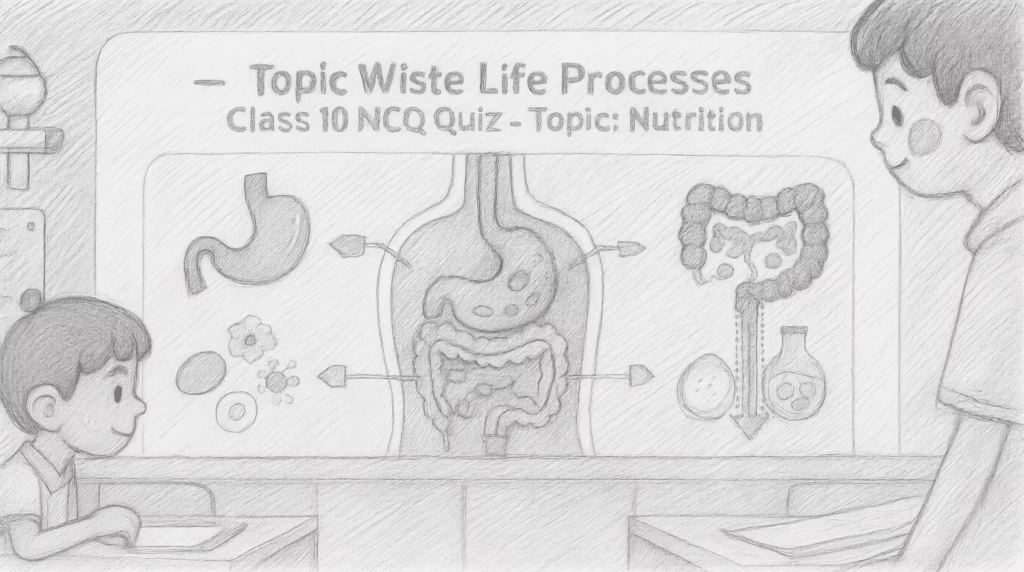
“Life Processes Class 10 MCQ Quiz -Topic Nutrition” is strictly based on NCERT book chapter 5 Life Processes.
We here at studyless.in have left no stone unturned to ensure that the quiz has all the probable questions covered. For that we have combined our teaching experience and each line of your NCERT book to make the questions.
We hope you should first learn the chapter and understand its concepts before attempting the quizzes on “Life Processes”.
Here are the link to chapter explanations, short notes , assertion and reason type questions and MCQs.
- Explanation-Life Processes Class 10
- Life Processes Short Notes Class 10
- MCQs Life Processes Topic Wise Class 10
- Life Processes Topic-Wise Assertion Reason Questions
Biology Quiz: Nutrition in Organisms
Test your knowledge with these 10 questions
Quiz Completed!
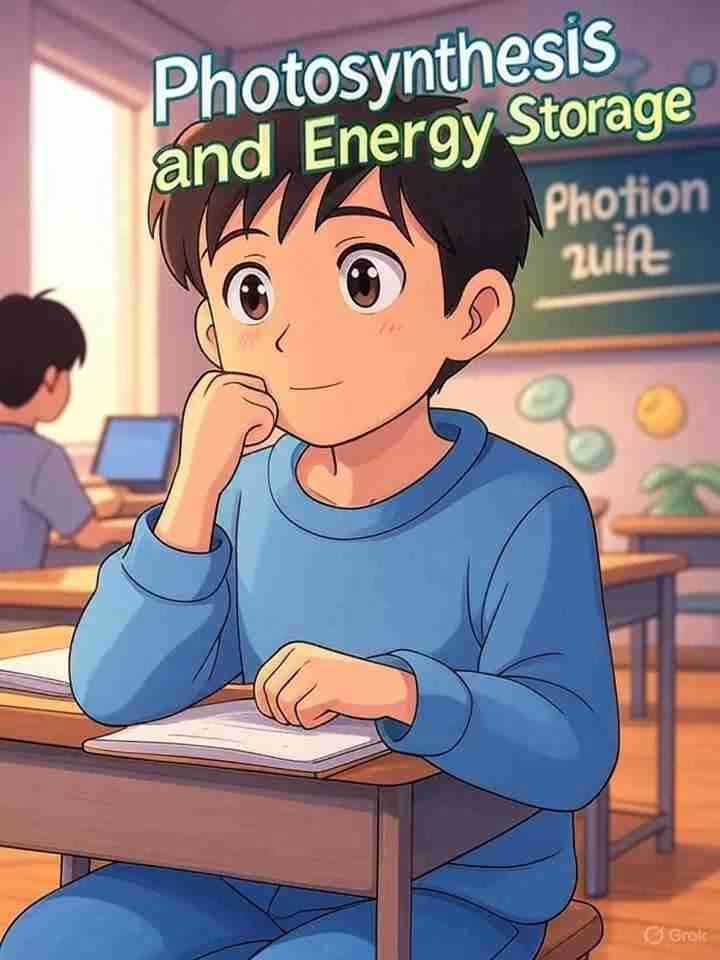
Biology Quiz: Photosynthesis and Energy Storage
Test your knowledge with these 10 questions
Quiz Completed!
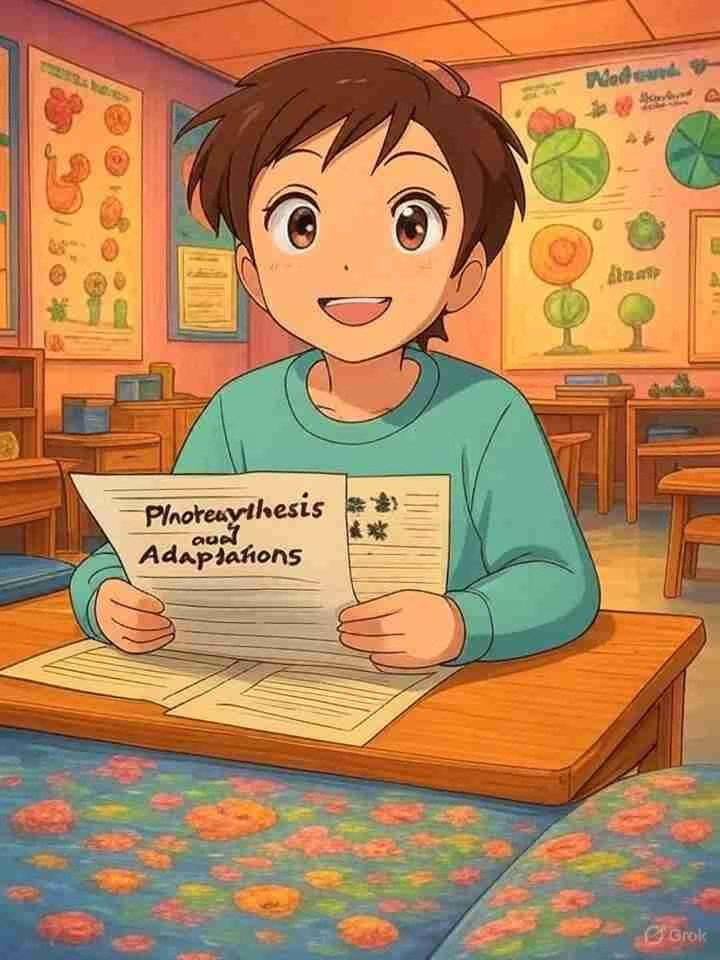
Plant Biology Quiz: Photosynthesis and Adaptations
Test your knowledge with these 10 questions
Quiz Completed!
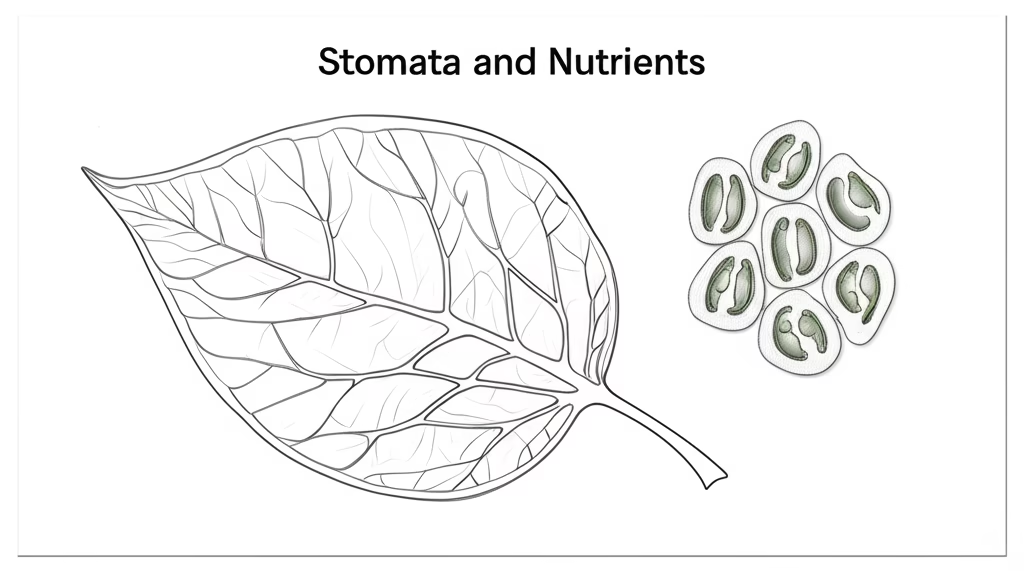
Plant Biology Quiz: Stomata and Nutrients
Test your knowledge with these 10 questions
Quiz Completed!
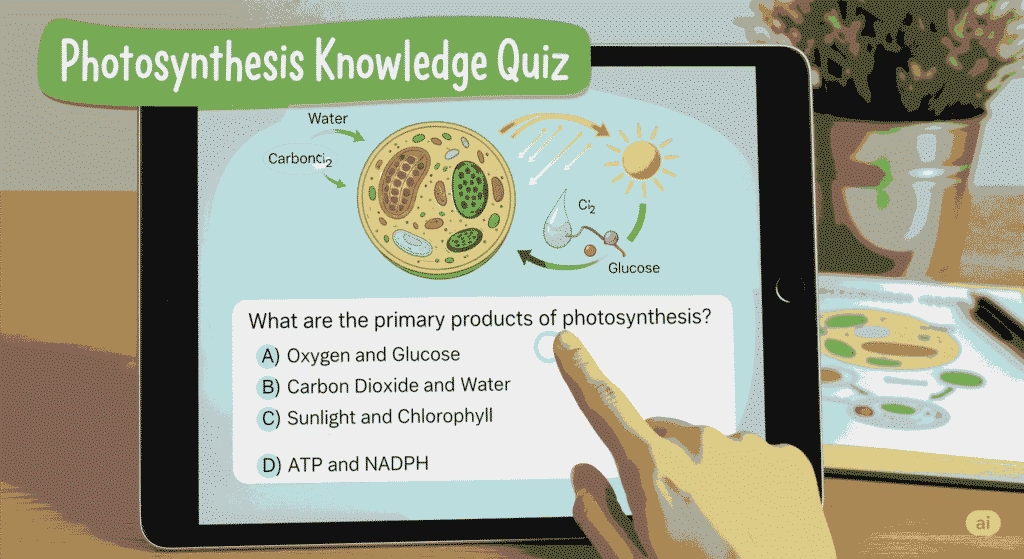
🌱 Photosynthesis Knowledge Quiz
Conclusion: Life Processes Class 10 MCQ Quiz Topic Nutrition
Well Done! you took the test and guage yourself on your preparation.
The class 10 science needs constant revision with quality question practice to score good marks. Keep visiting studyless.in for more study help.
You can request from us any help for your class.
FAQs
Frequently Asked Questions (FAQ) – Nutrition in Living Organisms (Based on NCERT)
Q1. What is the primary source of energy and materials for living organisms?
A: The primary source of energy and materials for living organisms is food. As per NCERT, “This source of energy and materials is the food we eat.”
Q2. Besides physical activities like walking or cycling, why else does the human body need energy?
A: Energy is also needed to maintain a state of order in the body, even when there is no apparent activity.
Q3. Why do living organisms need materials from outside?
A: Living organisms require external materials for growth, development, and synthesis of proteins and other essential substances in the body.
Q4. Which organisms are classified as autotrophs?
A: Green plants and some bacteria are autotrophs because they can produce their own food using inorganic substances.
Q5. How do autotrophs obtain their food?
A: Autotrophs make their food by using simple inorganic materials like carbon dioxide and water to synthesize organic compounds.
Q6. What role do enzymes play in heterotrophs?
A: Enzymes act as bio-catalysts that help heterotrophs break down complex substances into simpler ones for absorption and use.
Q7. What is the relationship between heterotrophs and autotrophs?
A: Heterotrophs depend directly or indirectly on autotrophs for food and energy, as autotrophs form the base of the food chain.
Q8. Give examples of heterotrophic organisms.
A: Animals and fungi are examples of heterotrophic organisms that cannot make their own food and rely on others for nutrition.
Q9. How do autotrophs fulfill their carbon and energy needs?
A: Autotrophs meet their carbon and energy requirements through the process of photosynthesis.
Q10. What process do autotrophs use to convert external substances into stored energy?
A: Autotrophs use photosynthesis to take in substances like carbon dioxide and water and convert them into stored forms of energy (e.g., carbohydrates).
Q11. Which two substances are used by autotrophs to produce carbohydrates during photosynthesis?
A: Carbon dioxide and water are converted into carbohydrates during photosynthesis.
Q12. What two conditions are essential for photosynthesis to occur?
A: Sunlight and chlorophyll are necessary for the conversion of carbon dioxide and water into carbohydrates.
Q13. What are carbohydrates used for in plants?
A: Carbohydrates are primarily used to provide energy to the plant.
Q14. How do plants store excess carbohydrates?
A: Excess carbohydrates are stored in the form of starch.
Q15. What is the internal energy reserve in plants?
A: Starch serves as the internal energy reserve in plants and is used whenever energy is needed.
Q16. How do humans store energy derived from food?
A: In humans, excess energy is stored in the form of glycogen, primarily in the liver and muscles.
Q17. What is the first step in the process of photosynthesis?
A: The first event is the absorption of light energy by chlorophyll in the chloroplasts.
Q18. What happens after light energy is absorbed during photosynthesis?
A: The absorbed light energy is converted into chemical energy, and water molecules are split into hydrogen and oxygen.
Q19. What happens to carbon dioxide during photosynthesis?
A: Carbon dioxide is reduced to form carbohydrates using the chemical energy produced earlier.
Q20. Do all steps of photosynthesis have to occur immediately one after the other?
A: No, the steps do not need to occur one after another immediately. For example, desert plants take up CO₂ at night and use it during the day.
Q21. How do desert plants adapt their photosynthesis process?
A: Desert plants take up carbon dioxide at night and store it as an intermediate compound, which is then used during the day with sunlight to complete photosynthesis.
Q22. What are the green dots seen in leaf cells under a microscope?
A: These green dots are chloroplasts, which are cell organelles involved in photosynthesis.
Q23. What substance is found inside chloroplasts?
A: Chloroplasts contain chlorophyll, the green pigment essential for photosynthesis.
Q24. Why is chlorophyll important in photosynthesis?
A: Chlorophyll is essential because it absorbs light energy from the sun, which drives the process of photosynthesis.
Q25. What are stomata?
A: Stomata are tiny pores present on the surface of leaves that allow for gas exchange.
Q26. Why is gaseous exchange through stomata important?
A: Gaseous exchange through stomata is crucial for the purpose of photosynthesis, allowing intake of CO₂ and release of O₂.
Q27. Can gas exchange occur in other parts of a plant besides leaves?
A: Yes, gas exchange also occurs across the surfaces of stems and roots, in addition to leaves.
Q28. Why does a plant close its stomata when it doesn’t need CO₂?
A: To prevent excessive loss of water through transpiration, the plant closes its stomata when carbon dioxide is not needed.
Q29. Which cells control the opening and closing of stomata?
A: Guard cells regulate the opening and closing of the stomatal pore.
Q30. What causes the stomatal pore to open?
A: The stomatal pore opens when water flows into the guard cells, causing them to swell.
Q31. What causes the stomatal pore to close?
A: The pore closes when guard cells shrink due to water flowing out of them.
Q32. Besides energy, what else do autotrophs need raw materials for?
A: Autotrophs also need raw materials to build their body structures and support growth.
Q33. How do terrestrial plants obtain water for photosynthesis?
A: Terrestrial plants absorb water from the soil through their roots.
Q34. Which elements do plants take up from the soil for growth?
A: Plants absorb essential elements like nitrogen, phosphorus, iron, and magnesium from the soil.
Q35. What is nitrogen used for in plants?
A: Nitrogen is a key element used in the synthesis of proteins and other vital compounds.
Q36. In what forms do plants absorb nitrogen from the soil?
A: Plants absorb nitrogen either as inorganic nitrates or nitrites, or as organic compounds prepared by bacteria from atmospheric nitrogen.
Q37. What requirement is common to all living organisms?
A: All organisms have a common need for energy and materials to sustain life processes.
Q38. Which organisms break down complex substances into simpler ones for growth?
A: Heterotrophs rely on breaking down complex food substances into simpler forms using enzymes.
Q39. Which organisms use inorganic sources like CO₂ and water to make food?
A: Autotrophs use simple inorganic materials like carbon dioxide and water to synthesize their food.
Q40. What is produced when CO₂ and water react during photosynthesis?
A: In the presence of sunlight and chlorophyll, carbon dioxide and water are converted into carbohydrates.
Q41. Where does the energy for plant metabolism primarily come from?
A: The energy comes from the utilization of carbohydrates produced during photosynthesis.
Q42. What are the products of water splitting during photosynthesis?
A: Water molecules are split into hydrogen and oxygen during the light-dependent phase of photosynthesis.
Q43. What form of energy is absorbed by chlorophyll?
A: Chlorophyll absorbs light energy from sunlight.
Q44. Which part of the leaf allows massive gaseous exchange for photosynthesis?
A: Stomata enable large-scale gaseous exchange in leaves for photosynthesis.
Q45. What happens to the stomatal pore if guard cells shrink?
A: If guard cells shrink, the stomatal pore closes.
Q46. Why must plants regulate stomatal opening and closing?
A: Regulation helps balance CO₂ uptake for photosynthesis with the prevention of excessive water loss.
Q47. Which of the following is NOT taken up from the soil for building plant body?
A: Oxygen is not taken up from the soil; it is obtained through air or produced during photosynthesis. Elements like phosphorus, iron, and magnesium are soil-derived.
Q48. Through which part do terrestrial plants primarily absorb water?
A: Terrestrial plants absorb water primarily through their roots.
Q49. Which element is essential for protein synthesis and is absorbed from the soil?
A: Nitrogen is crucial for the synthesis of proteins and other compounds and is absorbed from the soil in the form of nitrates or organic compounds.
Q50. What is the purpose of starch as an internal energy reserve in plants?
A: Starch is stored to be used as and when the plant requires energy, ensuring a continuous energy supply.
All answers are based on NCERT Class 10 Science curriculum (Chapter: Life Processes).





Good
Thanks!